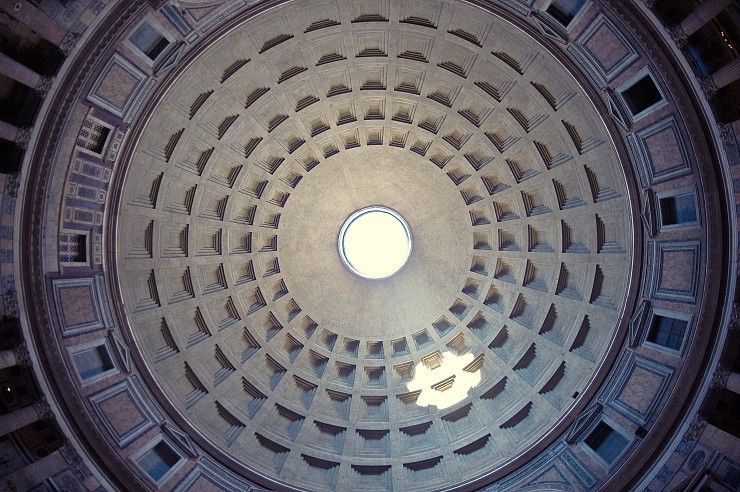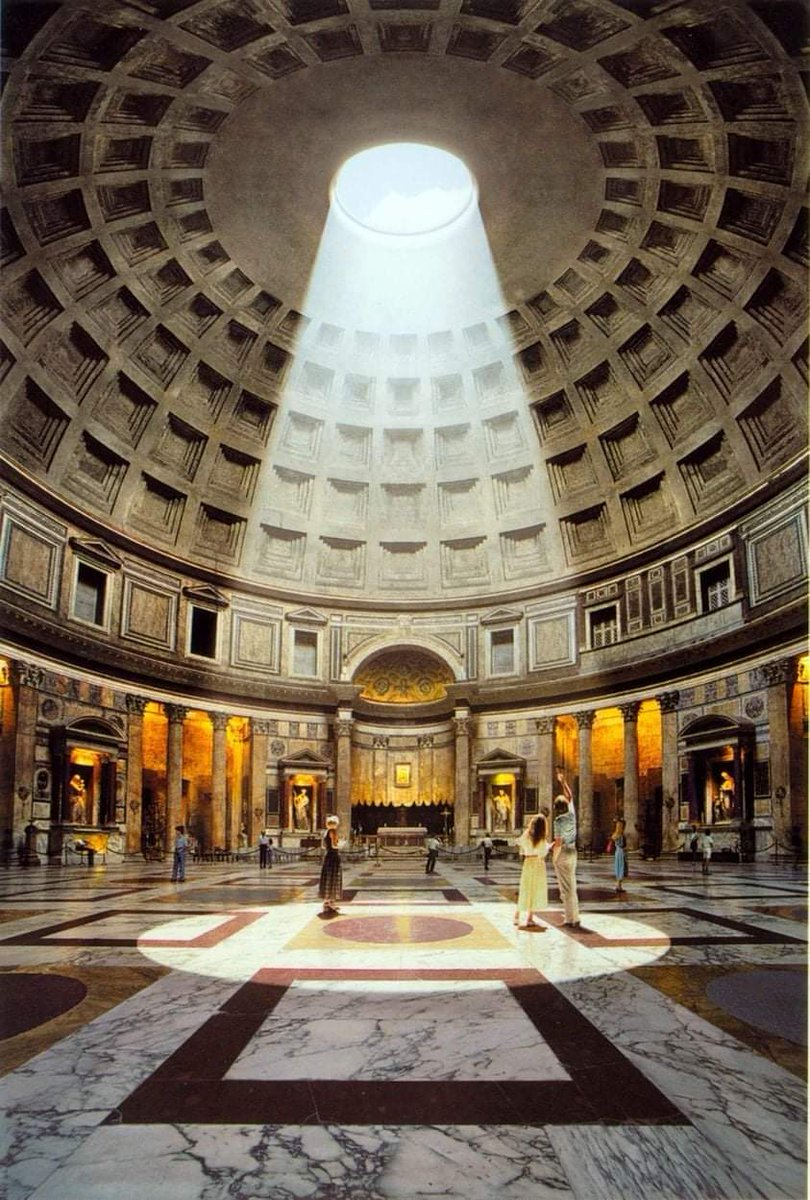Art his unit test 3 Pantheon
1/12
There's no tags or description
Looks like no tags are added yet.
Name | Mastery | Learn | Test | Matching | Spaced |
|---|
No study sessions yet.
13 Terms
Emperor Hadrian
(76-138 CE) emperor of rome, known for his fascination with greek culture and travel
Travertine
strong porous limestone used to build the foundation of the pantheon
Concrete, Pozzolano, and Lime
was used to create a stronger bonded concrete which used minimal water

Coffering
receding panels in the dome’s interior reduced weight of the dome while creating patterns
On the Sphere and the Cylinder
The Pantheon’s design uses shapes—a dome on top of a cylinder that reflect ideas from the Greek mathematician Archimedes (287 BC – c. 212 BC)

Oculus
This circular opening at the apex of the dome, It serves as the building's primary source of natural light and creates a dramatic interplay of light and shadow within the interior.
Greek Mystery Cults
Emperor Hadrian's interest in Greek mystery cults, which often involved rituals centred around death and rebirth, has led to speculation that the Pantheon may have had a deeper religious purpose beyond being a temple to all gods.